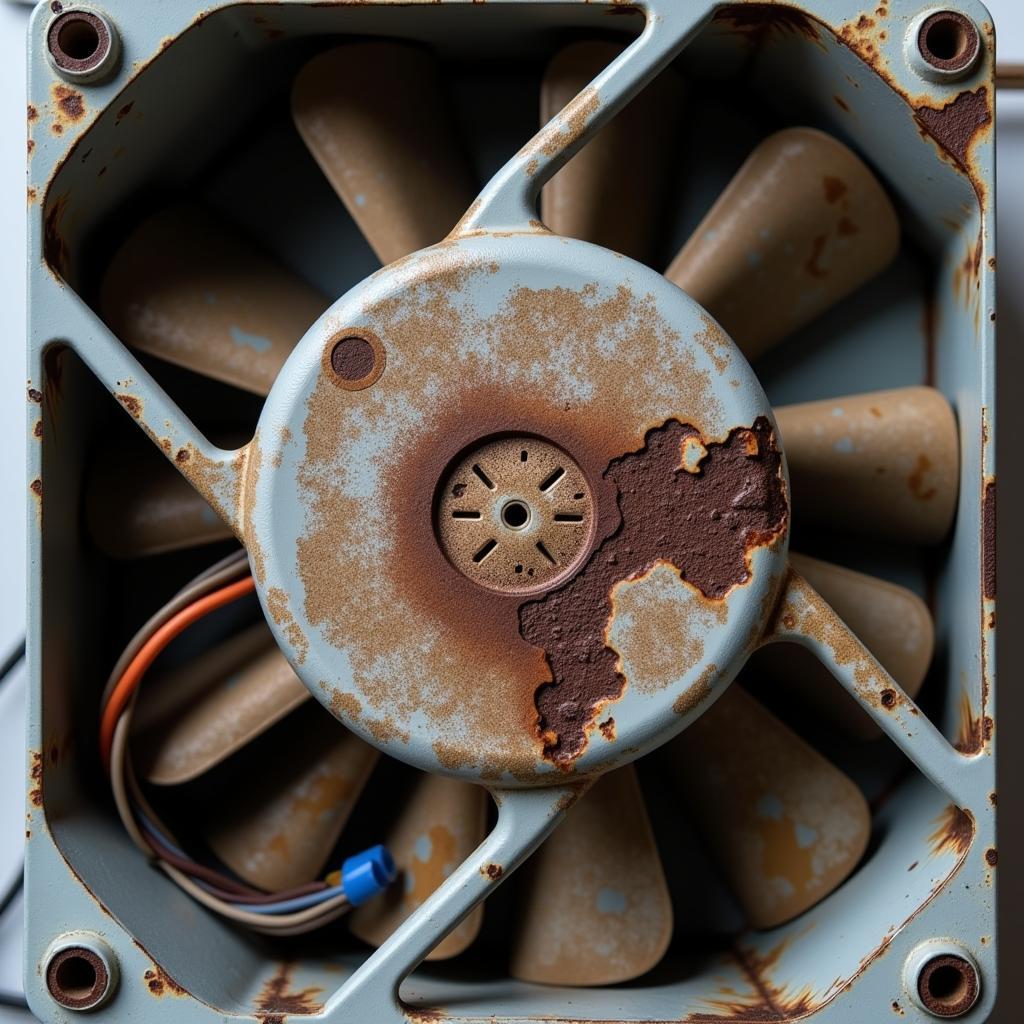A malfunctioning cooling fan can lead to overheating, engine damage, and costly repairs. Understanding the causes of fan problems in car systems and knowing how to troubleshoot them is crucial for every car owner and mechanic. This comprehensive guide dives into the common issues related to car cooling fans, providing practical solutions and expert advice to help you keep your engine running cool.
Understanding Your Car’s Cooling System
The cooling system is vital for maintaining the optimal operating temperature of your engine. A key component of this system is the cooling fan, which pulls air through the radiator to dissipate heat. There are typically two types of fans: mechanical fans, directly connected to the engine, and electric fans, controlled by a temperature sensor. A malfunctioning fan can have significant consequences, so addressing fan problems in car engines promptly is essential.
Common Fan Problem in Car Scenarios
Several issues can cause your car’s cooling fan to malfunction. These include:
- Faulty Fan Motor: The most common culprit is a worn-out or seized fan motor. This will prevent the fan from spinning, leading to overheating, especially in stop-and-go traffic or hot weather. Similar to car auxiliary fan problems, this can be diagnosed by checking for power at the fan motor connector.
- Blown Fuse or Relay: A blown fuse or a faulty relay can interrupt the power supply to the fan motor. This is a relatively easy fix and often overlooked. Check your owner’s manual to locate the correct fuse or relay.
- Malfunctioning Temperature Sensor: The temperature sensor tells the fan when to turn on. A faulty sensor can prevent the fan from activating even when the engine is hot. This issue mirrors the problems of fans dont turn on car, often resulting in overheating.
- Damaged Wiring: Wiring issues, such as corroded connectors or damaged wires, can disrupt the electrical circuit and prevent the fan from functioning correctly.
- Low Coolant Level: While not directly a fan problem, low coolant levels can cause overheating, which puts extra strain on the fan and can eventually lead to its failure.
 Faulty Cooling Fan Motor
Faulty Cooling Fan Motor
Diagnosing Fan Problems in Car
Diagnosing the specific cause of your fan problem requires some basic troubleshooting. Start by checking the fuses and relays. Then, visually inspect the fan motor for any obvious damage. If you suspect a faulty temperature sensor, you can test it with a multimeter. You might also find it helpful to learn more about car problems cooling fan. For more complex electrical issues, it’s best to consult a qualified mechanic.
Solutions for Fan Problem in Car
Once you’ve identified the cause of the problem, the next step is to implement the appropriate solution:
- Replacing the Fan Motor: If the fan motor is faulty, it needs to be replaced. This is a relatively straightforward job, but it’s important to ensure you get the correct replacement part for your car model.
- Replacing Fuses and Relays: Replacing a blown fuse or faulty relay is a quick and inexpensive fix.
- Replacing the Temperature Sensor: If the temperature sensor is malfunctioning, replacing it will restore the fan’s ability to activate correctly.
- Repairing Wiring: Damaged wiring should be repaired or replaced by a qualified mechanic to ensure the electrical system is functioning safely and efficiently. This has parallels with fan problems in car electrical systems.
- Topping Up Coolant: Maintaining the correct coolant level is essential for preventing overheating and ensuring the proper functioning of the cooling system.
 Replacing Car Cooling Fan
Replacing Car Cooling Fan
Preventing Future Fan Problems in Car
Regular maintenance is key to preventing fan problems. This includes:
- Checking Coolant Levels: Regularly check your coolant levels and top them up as needed.
- Inspecting the Fan: Visually inspect the fan for any signs of damage or wear.
- Cleaning the Radiator: A clean radiator helps to dissipate heat more effectively, reducing the strain on the cooling fan.
Conclusion
Addressing fan problems in car engines promptly is crucial to prevent overheating and costly engine damage. By understanding the common causes and solutions, you can keep your car’s cooling system in top condition. For more information on related topics, you might find our article on infant car seat back problems helpful. Remember, regular maintenance is the best way to avoid fan problems and ensure your engine stays cool. If you need further assistance, connect with AutoTipPro at +1 (641) 206-8880 or visit our office at 500 N St Mary’s St, San Antonio, TX 78205, United States.
FAQ
-
How often should I check my car’s cooling fan? It’s a good idea to visually inspect your cooling fan every time you check your coolant levels, which should be done at least monthly.
-
What are the signs of a failing cooling fan? Overheating, unusual engine noises, and a constantly running fan are all potential signs of a failing cooling fan.
-
Can I drive my car with a faulty cooling fan? It’s not recommended to drive with a faulty cooling fan, as this can lead to engine overheating and damage.
-
How much does it cost to replace a car cooling fan? The cost of replacing a cooling fan varies depending on the car model and the type of fan.
-
How can I prevent my car’s cooling fan from failing? Regular maintenance, including checking coolant levels and inspecting the fan, is the best way to prevent fan problems.
-
What is the difference between a mechanical and an electric cooling fan? Mechanical fans are driven directly by the engine, while electric fans are controlled by a temperature sensor.
-
What should I do if my car overheats? If your car overheats, pull over to a safe location, turn off the engine, and allow it to cool down completely before checking the coolant level.




Leave a Reply